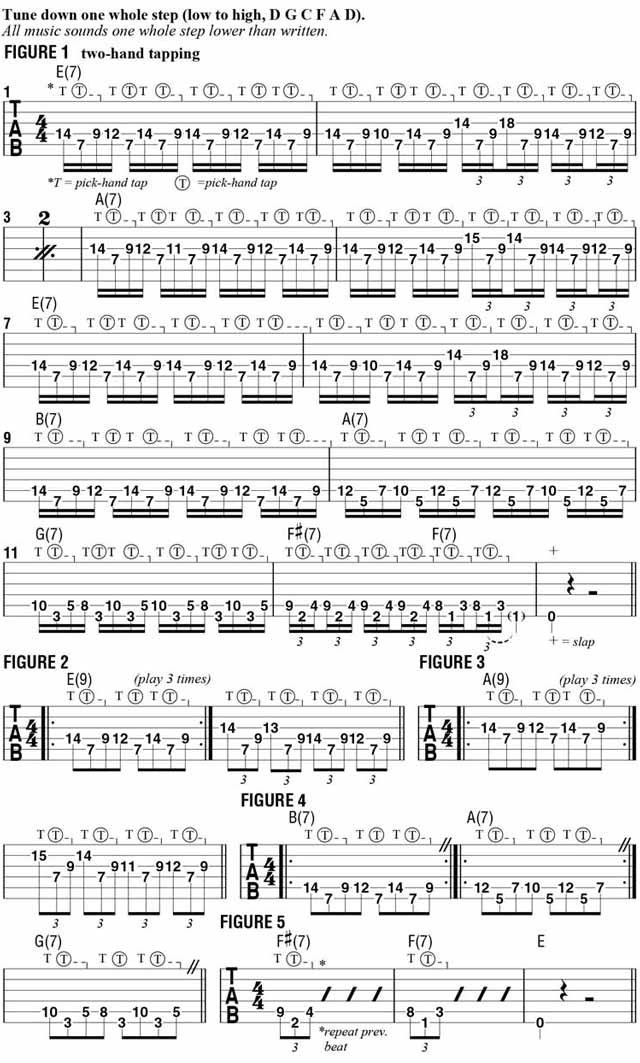Performing Fluid Arpeggios Using Two-Hand Tapping

Hello everyone, and welcome to my new Guitar World instructional column! Over the course of these columns I will demonstrate a handful of the techniques I use when writing for and playing with Adrenaline Mob.
It is my hope that these lessons will provide valuable insight into building your chops while offering some new techniques and approaches to the instrument.
One of my favorite techniques involves two-hand tapping, wherein notes are sounded by tapping onto the fretboard with both hands. Akin to a piano player or, in fact, just like a Chapman Stick player, the fingertips from both hands sound the notes by landing on the fretboard, and the patterns of the licks change relative to the sequence with which the fingertips touch the strings.
I like to refer to this technique as percussive tapping, because I think of it in the same way that a drummer would execute a syncopated pattern on a drum—both hands are used to create the specific and shifting rhythmic syncopations that are heard.
The only difference is that I’m using my fingertips to “tap out” these rhythms on the fretboard, simultaneously sounding notes and chords. I am very intrigued by drummers and the way in which they utilize shifting rhythms, like triplets and “quads” (four-note patterns), and how one could apply this concept to the guitar.
FIGURE 1 is a fast tapping riff played over a pattern similar to that of a 12-bar blues in the key of E. Each tapped pattern outlines the sound of a dominant seven chord, starting with two bars of E7, representing the I (“one”), followed by the identical tapped pattern a fourth higher, sounding A7, the IV (“four”), in bars 5 and 6; bars 7 and 8 restate the E7 pattern, followed in bar 9 by the same pattern a fifth lower, for B7, a return to A7 (albeit one octave lower) in bar 10, and then the riff culminates with a twist on a standard 12-bar blues form with the use of G7 to F#7 to F7 across the last two bars.
The last bar serves to reference a return to the tonic, E, with a slap on the open low E string with the pick-hand index finger. Let’s look at each element of the lick individually.
FIGURE 2 shows the initial E7 pattern as played in eighth notes and eighth-note triplets: a “T” represents notes sounded with an index-finger tap with the pick hand; a “T” in a circle represents an index or pinkie tap with the fret hand. The lick is started with a pick-hand tap, followed by two consecutive taps with the fret hand. Throughout, two consecutive notes are always sounded with the fret hand, starting with the index finger and followed by the pinkie.
In FIGURE 1, the majority of the pattern is built from six beats of consecutive 16th notes, followed by two beats of 16th-note triplets. In FIGURE 2, you can see that the same eighth-note lick is played three times, followed by four beats of eighth-note triplets.
FIGURE 3 outlines the A7 lick in the same manner, and FIGURE 4 takes you through the B7, A7 and G7 licks. The final triplet-based phrase is detailed in FIGURE 5, descending from F#7 to F7 to E.
Practice each section slowly before stringing them together.

Get The Pick Newsletter
All the latest guitar news, interviews, lessons, reviews, deals and more, direct to your inbox!










